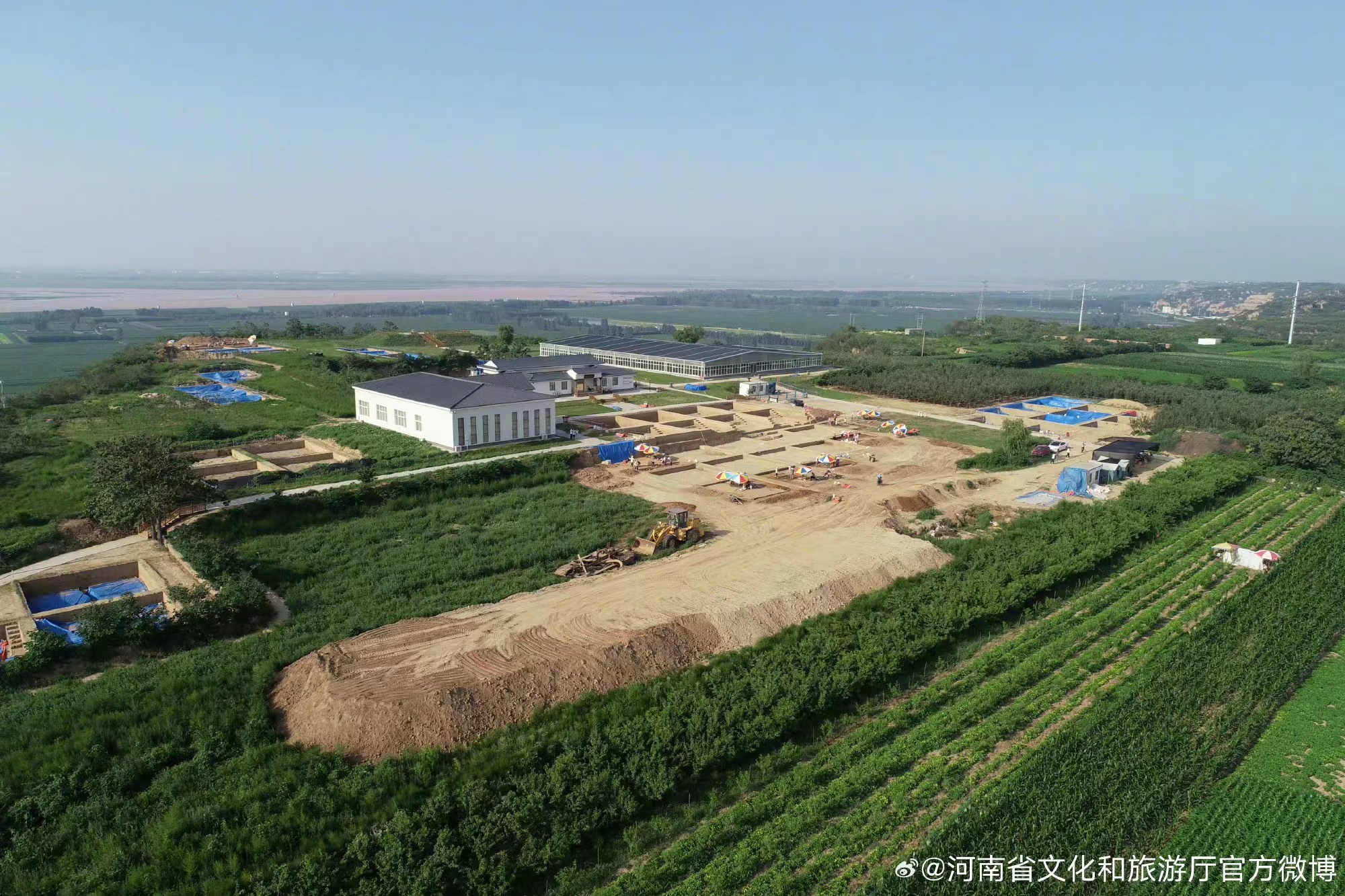
The Shuanghuaishu site Photo: Sina Weibo
By examining the human bone remains discovered from the Shuanghuaishu ruin, an archaeological site dubbed the “seed of early Chinese civilization,” researchers recently found that the site’s residents commonly experienced a dental problem dating back 5300 years ago.
The issue was caries, still often seen in modern life. Led by Zhou Yawei, a professor at Zhengzhou University, the research team identified the youngest “patient” with caries at around 4 years old, with seven out of ten individuals having the dental problem.
Archaeologist Jia Zhengyu told the Global Times that the strikingly high rate of ancient people’s caries problem is “essentially related to their shared lifestyles, especially dietary habits.”
Located in Gongyi, Central China’s Henan Province, Shuanghuaishu belongs to China’s Yangshao culture, mainly distributed in the middle and lower reaches of the Yellow River.
Archaeologist Wang Meng told the Global Times that the natural conditions, including warm and moist weather, were conducive to the local ancient people growing grain, especially millet. “Many of the Yangshao culture’s iconic pottery relics were once designed to store and plate such foods,” Wang said.
Such a staple food contains high sugar content, the "major reason" why the caries problem was common among ancient people in the Shuanghuaishu area, explained Zhou, the expert.
The dental problem of ancient people may be considered a novelty, yet it can “reflect China’s long-standing agricultural civilization,” remarked Zhou.
In addition to maintaining the “millets” growing tradition, a silkworm sculpture and some silk textile segments have also been excavated from the site along with grains scattered around. This discovery reveals an innovative agricultural model designed by ancient Chinese people to combine farming and mulberry industries.
“The model has later been inherited to nowadays. It was seen as the most suitable one for the Central Plain’s agricultural developments,” Wang told the Global Times.
First discovered in 1984, the Shuanghuaishu site was once a capital site that encompassed several ancient community clusters. The remaining area of the site is 1.17 million square meters. The site is significant to China’s national-level research on tracing the origin of the country's cultural civilization, contributing to researchers' analysis of the concept of “early China.”
“No matter if it's the Shuanghuaishu’s pottery relics or its architecture, the site gives us a lot of information about early Chinese people’s cultural beliefs, social structures, agricultural distribution, and also Chinese ancestors’ viewpoint of the universe,” said Wang.
To involve the public in the site’s represented Chinese culture, an archaeological program called “archaeological field study for the public” has been opened at the site, inviting people from different walks of life to experience the Shuanghuaishu culture firsthand. In a designed excavation area, visitors can use common archaeological tools such as shovels to dig deep into the culture.
“Such an experiential activity can develop the public’s awareness of Chinese history and culture. It can also bring up visitors’ sense to protect cultural heritages,” said Wang.
URL: https://www.seeglobalnews.com/read-2661.html